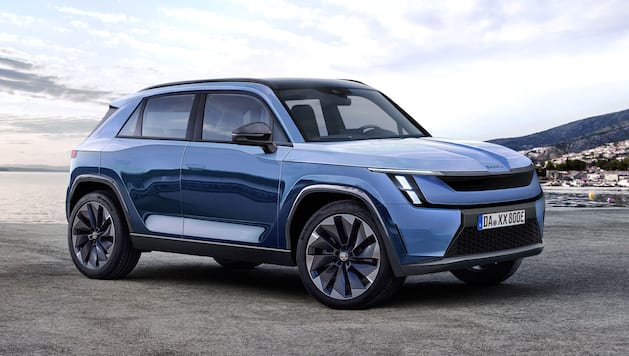Skoda has had a difficult year. This is not due to low customer demand, but to a difficult supply situation. That should change in 2023 and together with new models, a major attack is looming from 2024.
There is hardly a car brand in Europe that is as popular as Skoda. The Czech Volkswagen offshoot is particularly popular with private customers. The fact that the sales figures were so meager last year is not because customers are suddenly no longer interested in the models – quite the contrary. Problems with the supply of semiconductors, gaps in the supply chains and volatile markets meant that Skoda was only able to sell 731,000 vehicles in 2022.
In 2019, the number was still over 1.2 million vehicles. Skoda also has the problem that within the group one is more at the end of the food chain because the contribution margins are higher for other Volkswagen brands. The unchanged thin deliveries of semiconductors or batteries are primarily distributed to Porsche, Audi or Volkswagen.
That doesn’t change the fact that demand for Skoda models remains high. The delivery times are accordingly. Despite the difficult framework conditions, more than 20 percent more electric Enyaq vehicles were sold in 2022 than in 2021.
Skoda CEO Klaus Zellmer: “By accelerating our e-offensive, we are well prepared for the coming years and will continue to strengthen the Czech Republic as an important automotive and e-mobility location. The market situation will remain tense in 2023, but we are cautiously optimistic that the situation will gradually ease in the coming months. In addition, it shows that our strategy is already taking effect and that customers accept our products very well.” In any case, the Czechs are not lacking in self-confidence.
Three new models by 2026, 700 million euros for digitization and another 5.6 billion investment for electric mobility should show that the Czechs are serious about the leap up. The new products are not least new electric models. Many are already looking at the brand’s new flagship, which was shown for the first time in 2022 with the study of the Skoda Vision 7S.
The production model of the Vision 7S, which is around five meters long, is one of three completely newly developed vehicles that Skoda intends to bring onto the market by the end of 2026 – all purely electrically. “With the Vision 7S concept study, we are giving a concrete outlook on a completely new Skoda model, with which we will round off our product portfolio and our customer base,” says Klaus Zellmer.
Like the brand’s other electric models, the production vehicle, which will follow the Vision 7S in 2025, is based on the modular electric kit and, with its 89 kWh battery pack, should enable a range of up to 600 kilometers before it is plugged in again.
Unlike the current models, the crossover is available with either rear-wheel or all-wheel drive. It can be recharged at a fast charging station with up to 200 kW. The power spectrum should largely correspond to that of the current models on the electrical kit, with the engine power likely to range between 150 kW / 204 hp and 265 kW / 360 hp.
As early as 2024, the Skoda Elroq, the little brother of the Enyaq, should celebrate its premiere. In terms of dimensions, the Elroq is in a league with the compact combustion model Karoq. The drive technology comes from the group shelf and is therefore largely identical to Skoda Enyaq or VW ID4 / ID5. There is a choice of rear-wheel or all-wheel drive and a power range from 110 kW / 150 hp to 220 kW / 299 hp.
In 2025 / 2026 there will be another electric crossover one class below that, which has not yet been named, but which is likely to be the technical twin of the VW ID2 / ID2 X. Accordingly, it is not on the current MEB structure, but will be an electric front-wheel drive with a maximum output of 150 kW / 204 PS. As originally planned for the VW ID2, the price range should be around 20,000 euros.
However, given the high cost of development, semiconductors, raw materials and battery packs, that seems unlikely; accordingly, it could go in the direction of 23,000 euros. However, 400 kilometers of electric range seems set for the competitor from VW ID2, Mini Aceman or Hyundai Kona.
Two sizes larger and with the choice between plug-in hybrid and combustion engine, the second generation of the Skoda Kodiaq with well-known qualities will be launched in autumn 2023. Similar to the sister model VW Tiguan, the electric range of the plug-in hybrids should be over 100 kilometers.
On our e-mobility portal EFAHRER.com you will find all e-vehicles available on the German market
You can also arrange a test drive for the car of your choice free of charge and thus start e-mobility in an uncomplicated manner.















